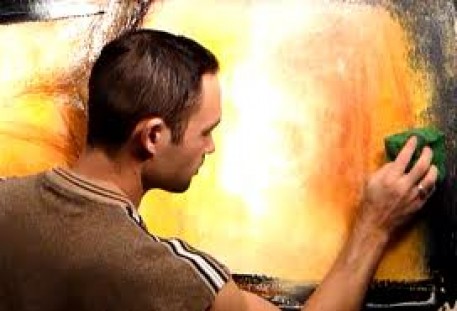How to Blend Acrylic Paint on Canvas

Acrylic paint typically consists of pigment suspended in acrylic polymer emulsion. These fast drying and adaptable paints are water soluble; however, after drying they become permanent and can’t be washed with water. Blending acrylic paints on canvas is a little bit more technical than using water colours or oil paints. The reason behind this is their fast drying nature. Most of the time a retardant is added to acrylic paints to decrease their rate of drying, otherwise the artists have to work really quickly to blend different colours to end up with an even tone.
Things Required:
– Canvas
– Paint brushes for acrylic paint
– Acrylic paint
– Water
Instructions
-
1
Three-dimensional blending
Apply different strokes of a colour side by side on the canvas. While the paint is still wet, smooth the transition between the lines using a slightly damp clean and soft brush. -
2
Renaissance method of crosshatching
Apply thin lines of a darker shade of colour on top of the lighter tone, just like you draw with a sketch pencil to shade on paper. Now build up the shadow by applying more strokes of the darker colour, crossing the first line at the areas where you want darker tones. This is known as Renaissance method of crosshatching. -
3
Stippling
In this painting technique, cover the desired area with a light shade of the colour of your choice and then stipple small dots of a darker shade onto it. Initially apply dots of medium tone and then dark tone in the areas of the canvas that you want to keep darkest. -
4
Blending opaque colours
Unlike transparent or light coloured acrylic paints blending opaque colours is quite tricky. Initially paint each shade next to one another on the canvas and blend them using a clean, wet brush. -
5
Using Squeegee
This acrylic painting technique is used to create interesting designs. Pour a little amount of acrylic paint on the surface of canvas and spread it using a squeegee. -
6
Pouring paint
As is evident from the name, the required amount of acrylic paint is poured directly on the Canvas. The canvas is then tilted a bit to allow the paint to mix. In this painting technique, colours blend naturally.







